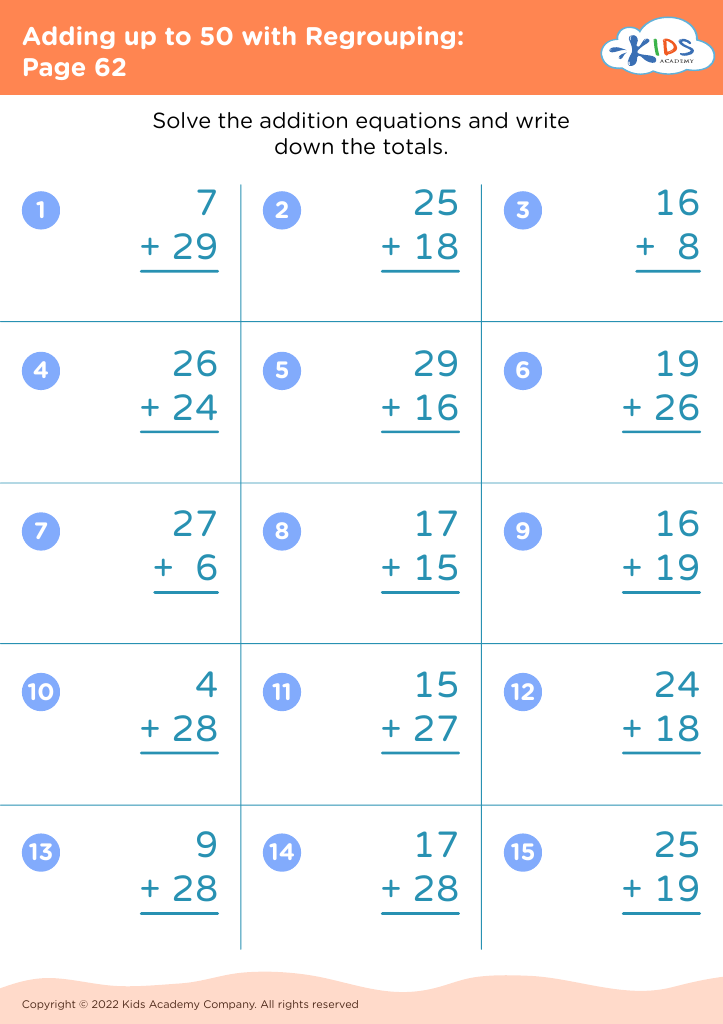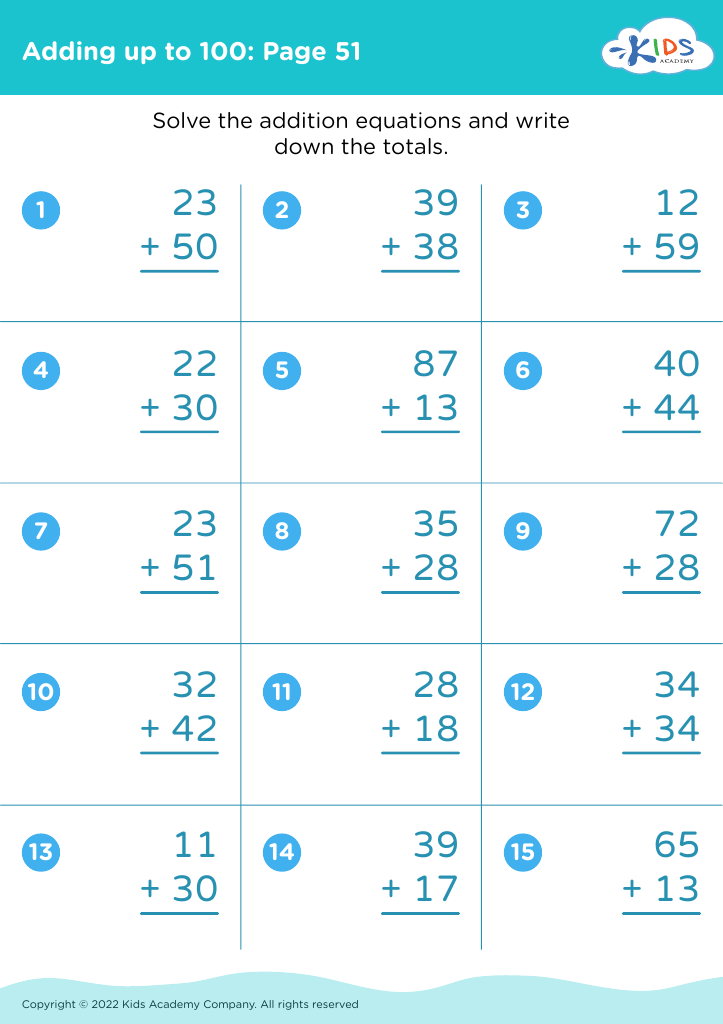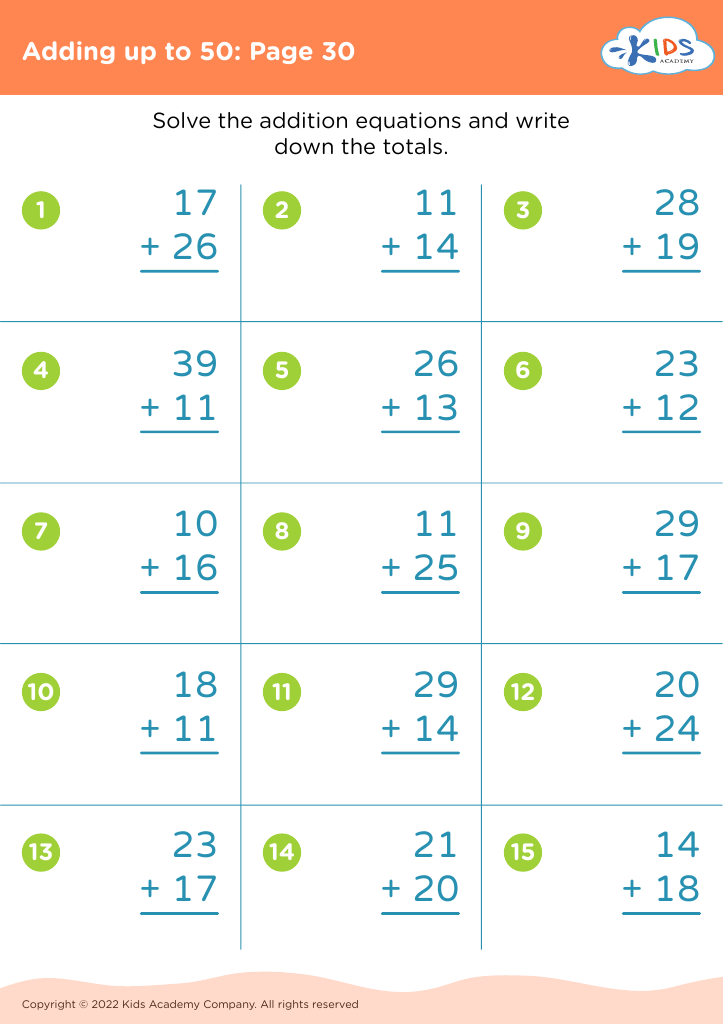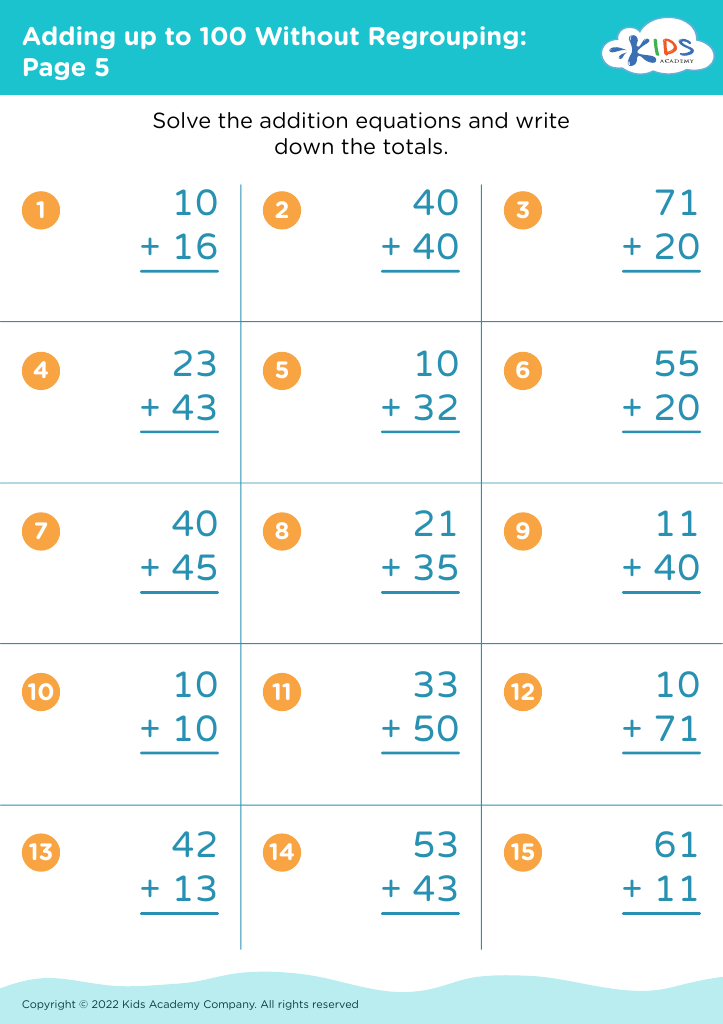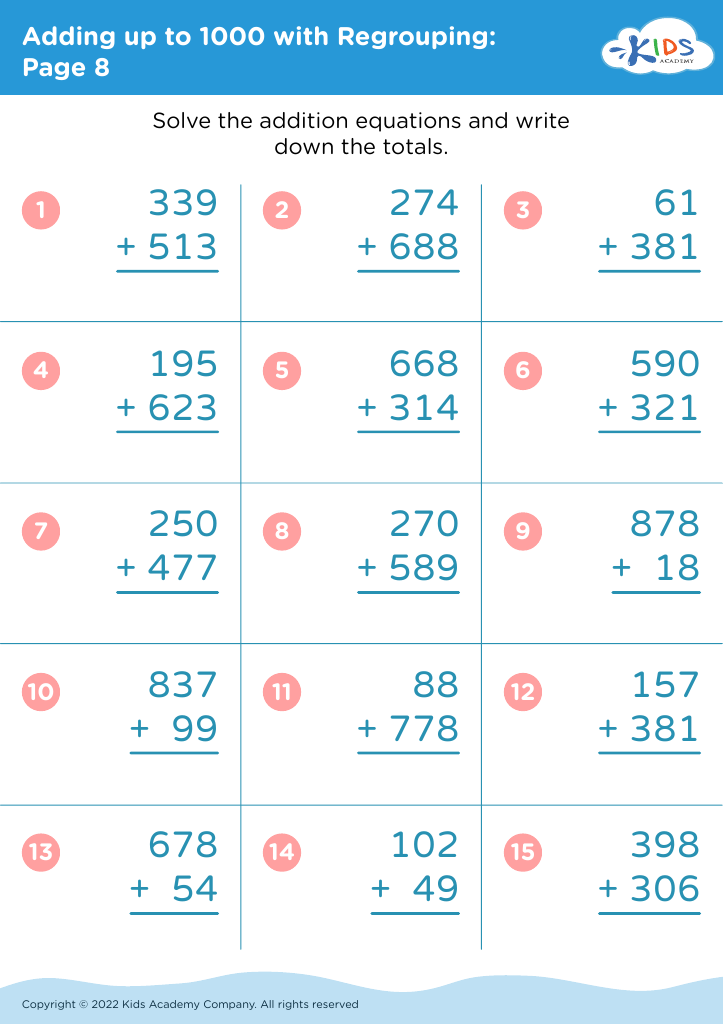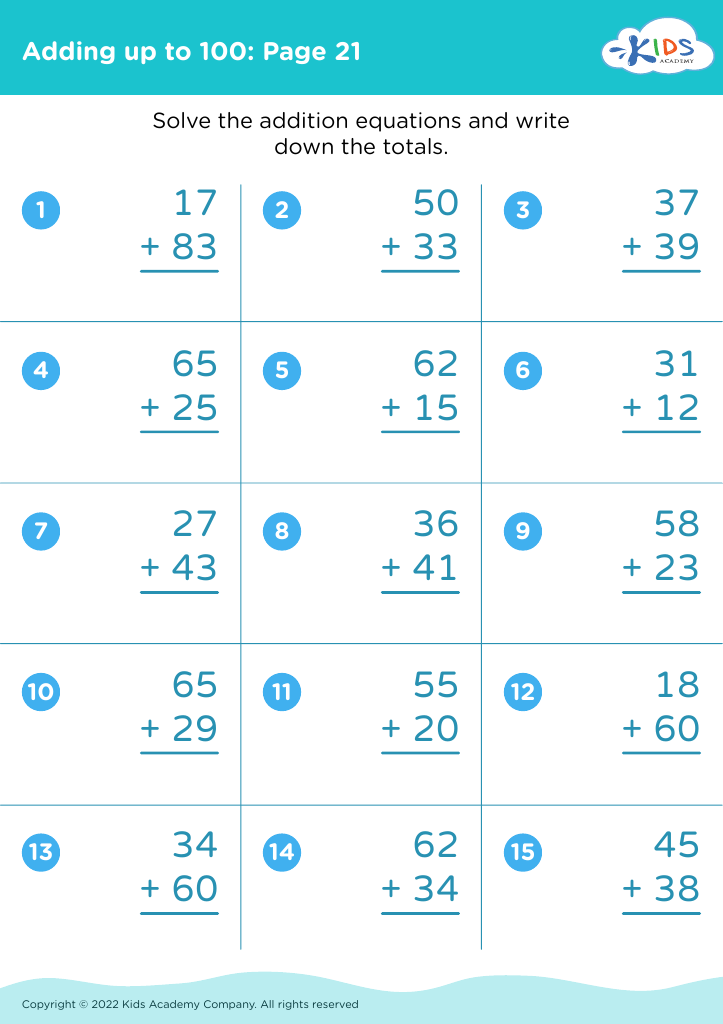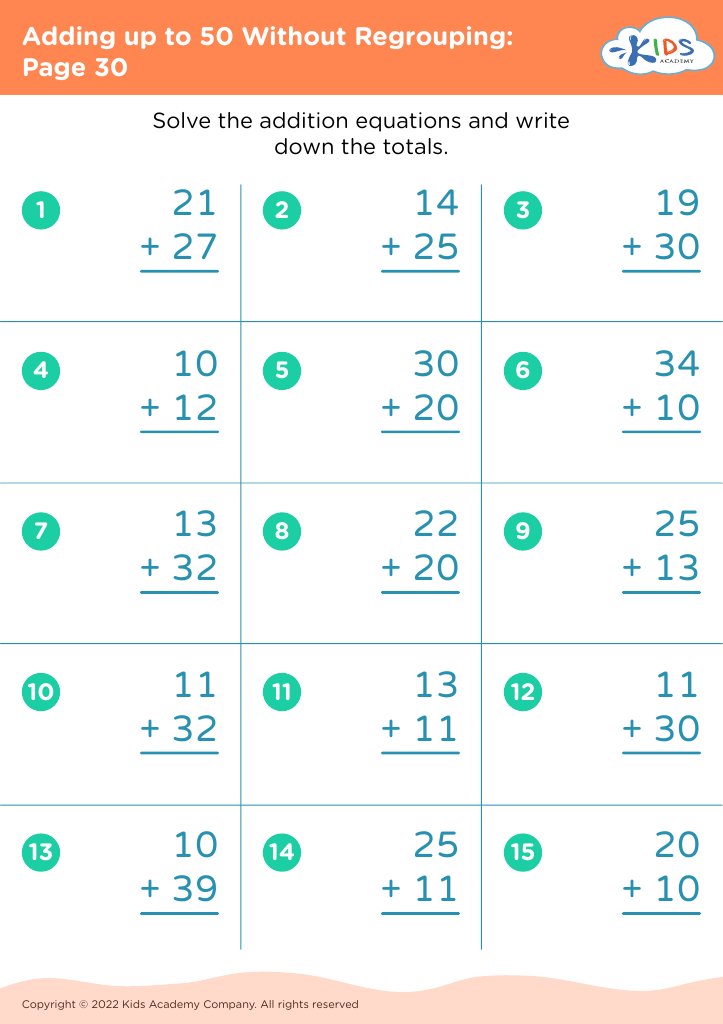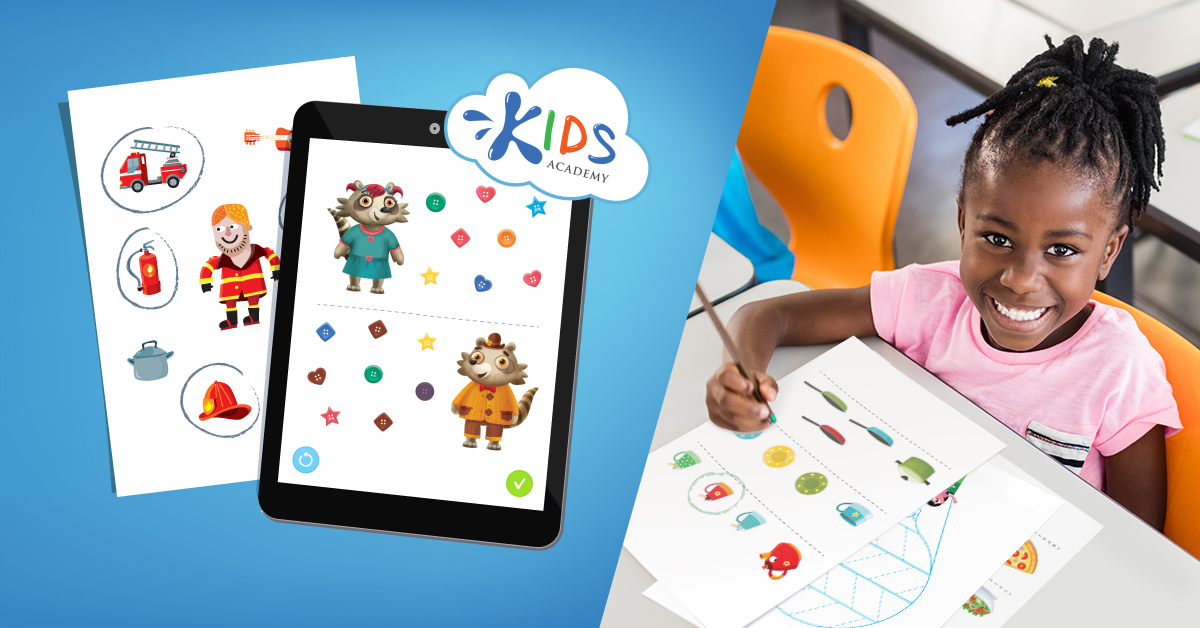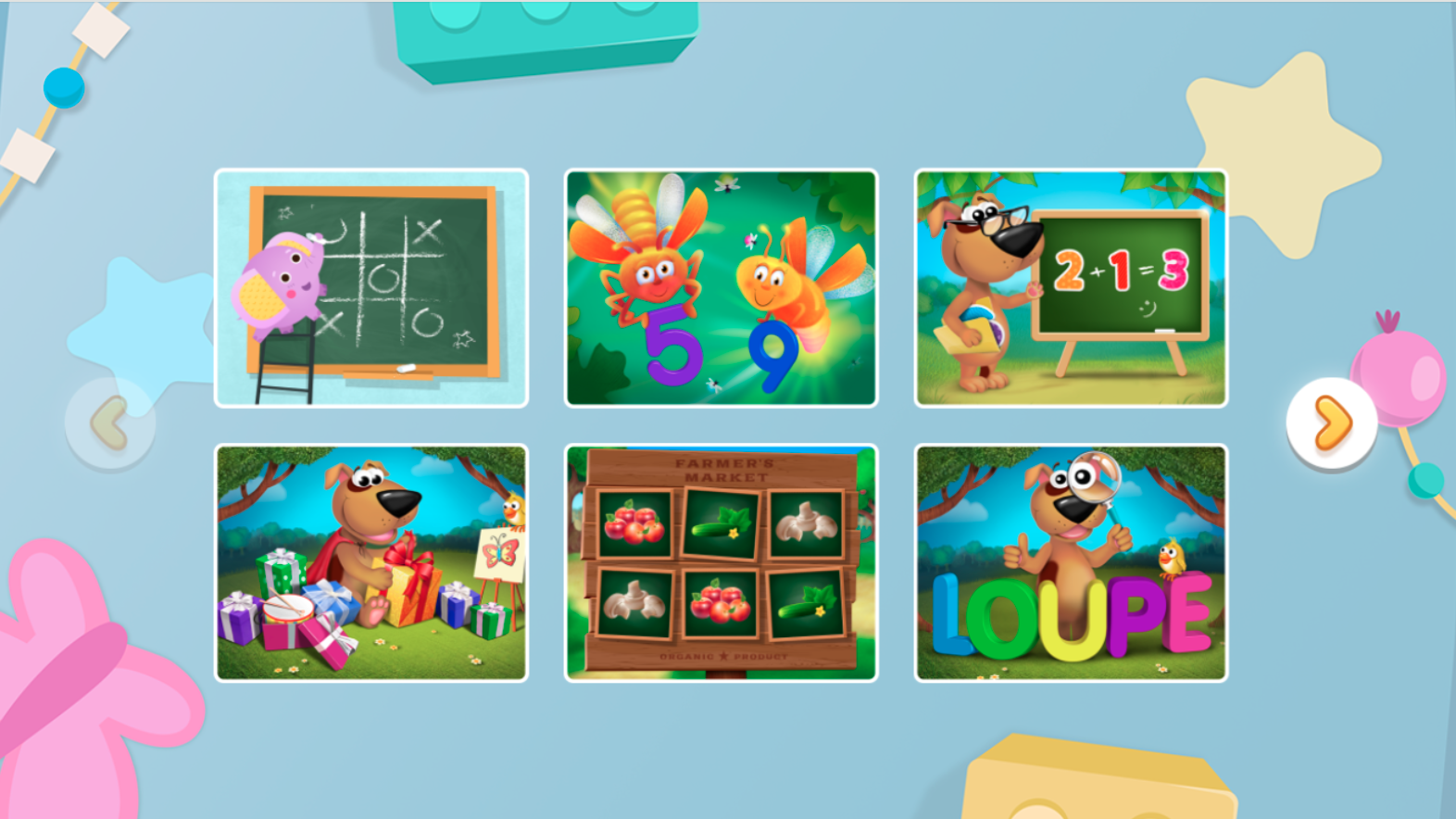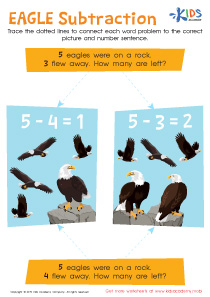Enhancing problem-solving abilities Addition Worksheets for Ages 4-9
10 filtered results
-
From - To
Unlock the potential of young minds with our "Enhancing Problem-Solving Abilities Addition Worksheets" designed for ages 4-9. Our engaging and interactive worksheets provide a solid foundation in addition while promoting critical thinking and problem-solving skills. Tailored for early learners, these activities make math fun and accessible. Each worksheet is carefully crafted to challenge and motivate children, helping them build confidence and a love for learning. Ideal for both classroom use and homeschooling, our addition worksheets are the perfect resource for fostering academic success. Enhance your child’s math ability today with our expertly developed tools!
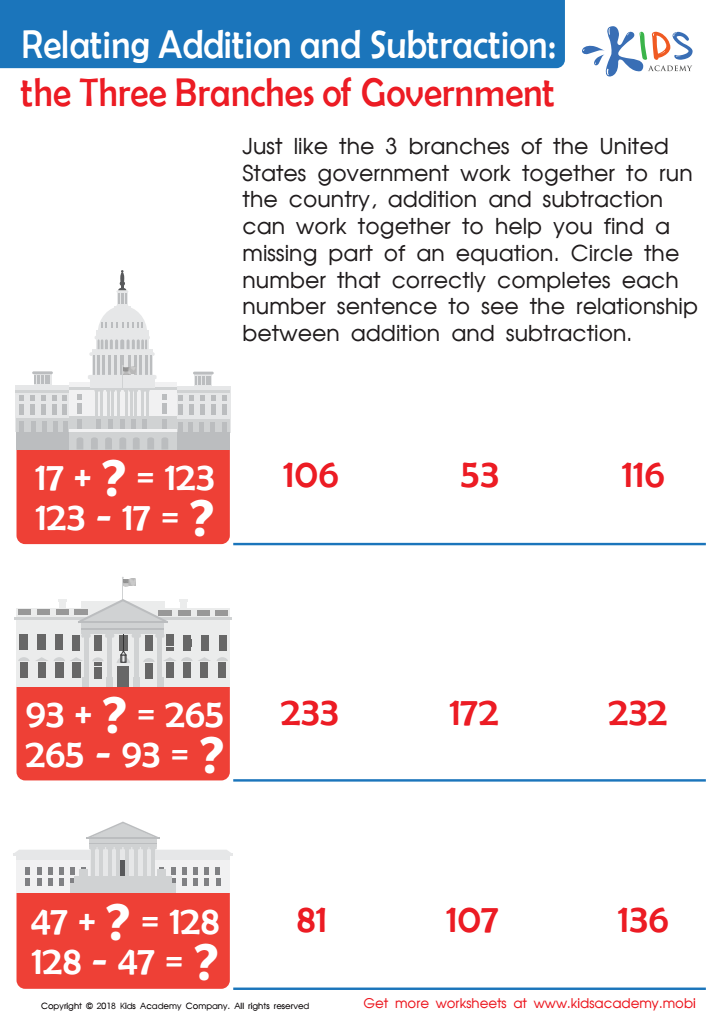

The Three Branches of Government Worksheet
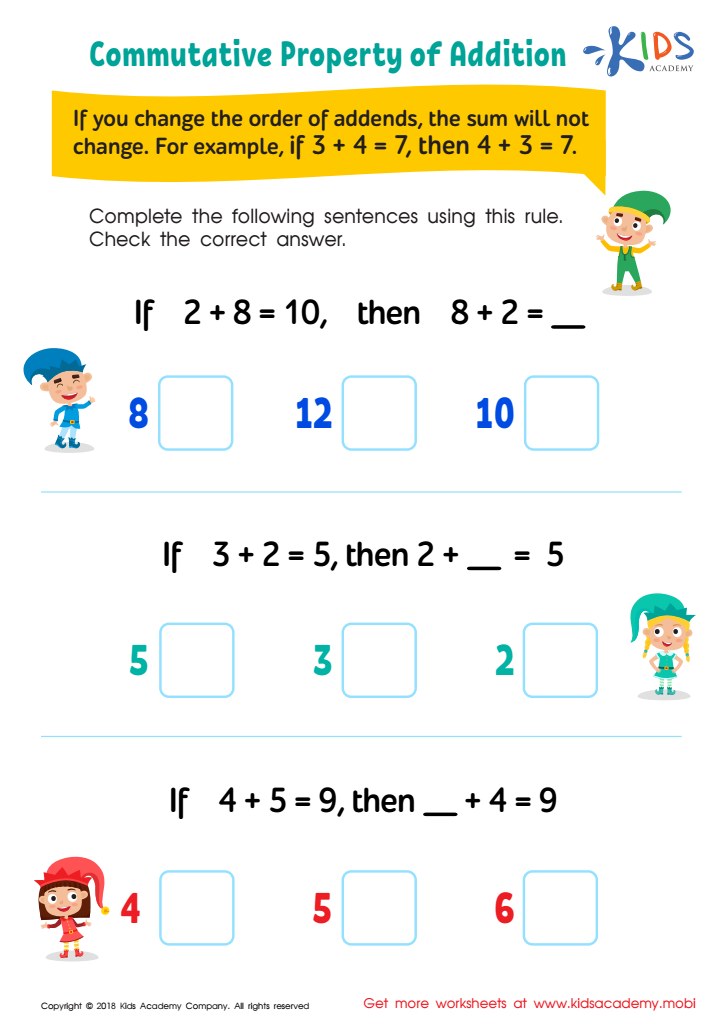

Commutative Property of Addition Worksheet
Parents and teachers should care immensely about enhancing problem-solving abilities, especially in addition, for children aged 4-9, as it lays a crucial foundation for their future academic success and practical life skills. Early math skills, particularly in addition, are vital building blocks for more complex mathematical concepts. By mastering addition, children develop logical thinking, pattern recognition, and analytical skills, which are indispensable across various subjects including science, technology, and even literacy.
Cognitive development in the early years is remarkably rapid. Introducing problem-solving in addition helps activate critical areas of the brain associated with numerical processing and spatial reasoning. Moreover, engaging with these problems improves children's perseverance and creativity in finding solutions, fostering a growth mindset which is essential for lifelong learning.
Socially and emotionally, problem-solving nurtures a child’s confidence and independence. When children experience achievement in solving addition problems, it bolsters their self-esteem and encourages a positive attitude toward learning. This intrinsic motivation can make them resilient in facing academic challenges later on.
In summary, emphasizing problem-solving skills in addition equips children with vital intellectual tools, enhances their academic performance, and strengthens their emotional intelligence, setting them on a path toward well-rounded, successful futures.

 Assign to My Students
Assign to My Students
